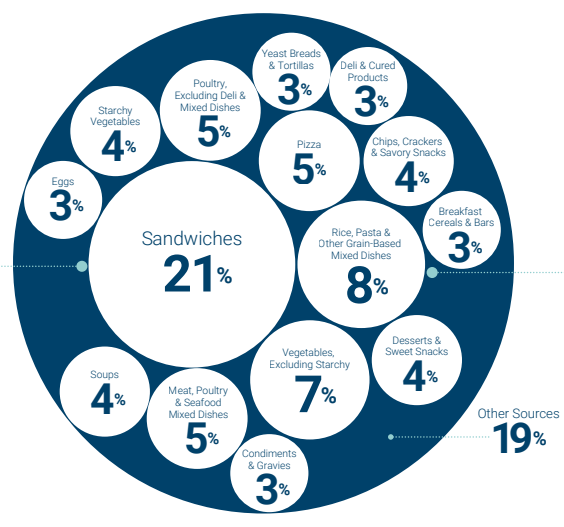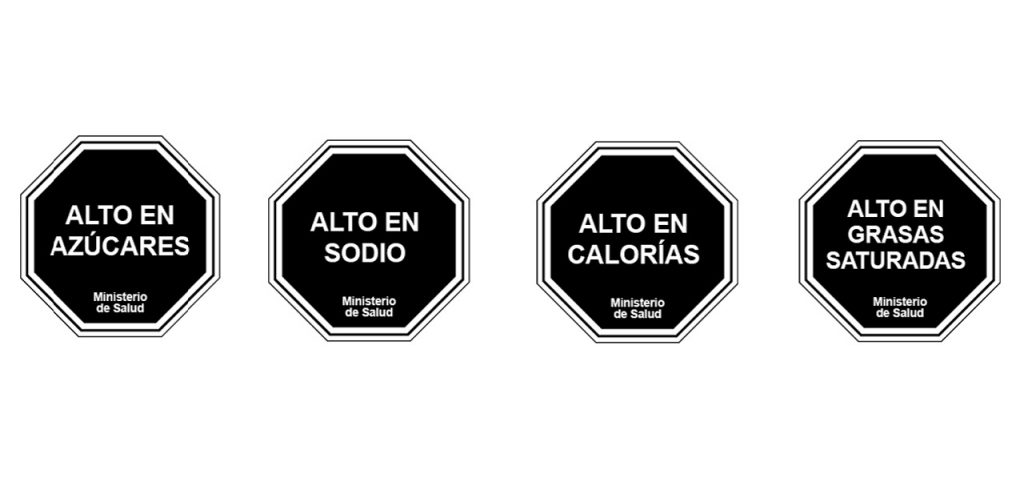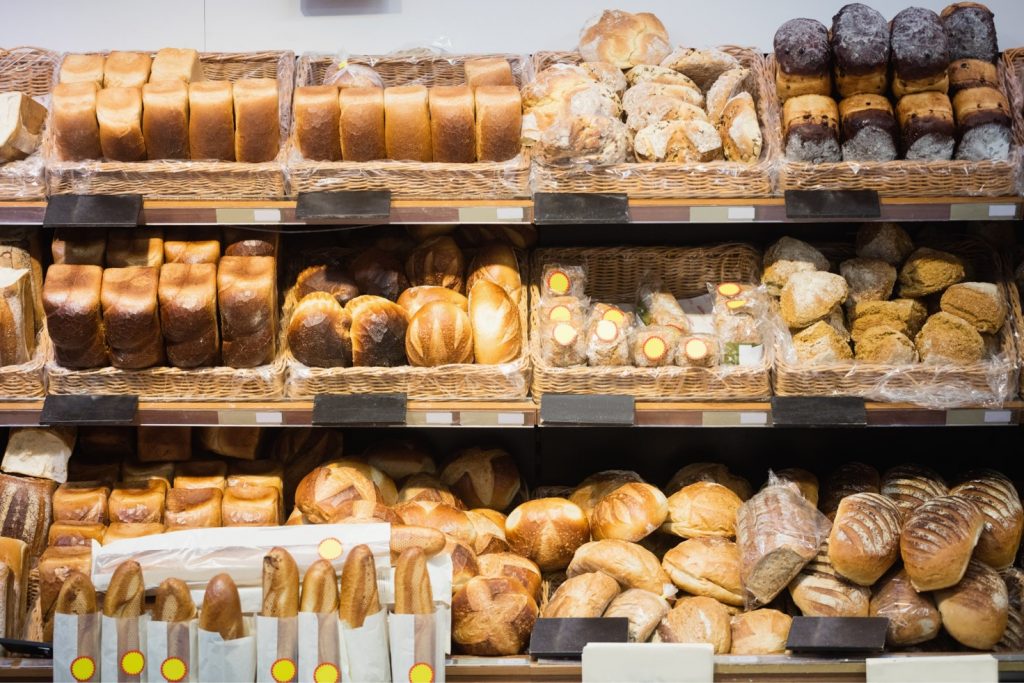Sodium Reduction Initiatives Across the Globe
Reducing sodium intake is a major health priority of governments across the globe. Sodium reduction initiatives for foods are becoming more prevalent, and consumers everywhere are becoming more health conscience. These developments are placing increased demand on food companies to reduce the sodium content of their foods.
Sodium reduction initiatives are most often put forward by governments following advice by health-focused entities like the World Health Organization (WHO) and require industry engagement to make significant progress. As the world focuses more on sustainable diets, we can expect these sodium targets to become more important and prevalent in the coming years. In this article, we review:
-
-
-
- Sodium’s role in health
- Tax and legislation initiatives on sodium reduction being enacted globally, and their impact
- Mandatory and voluntary sodium targets across the globe
- Front-of-pack labelling systems that target or incorporate sodium reduction
- Developments in sodium reduction by the food & beverage industry
-
-
Where does Sodium come from in the diet?
Most of the sodium consumed is derived from processed food and food eaten out of the home for many regions across the globe. A significant proportion of sodium in the diet globally comes from foods such as bread, processed meats and dairy products1. The US FDA identify a wide variety of processed foods to be the main contributors of sodium in the diet2.
WHO advises an individual’s salt intake should not exceed 5 g of salt (2g of sodium) per day. According to WHO data, the global average daily salt intake is 9-12 g3, double the recommended maximum level.

Top sources of sodium: U.S. population ages 1 and older.
Source: USDA Dietary Guidelines for Americans 2020-2025
Effects of excess sodium intake on health
Heart disease and stroke are the leading causes of death globally4. Excessive consumption of sodium raises blood pressure which is a major risk factor for these conditions5. A moderate reduction in sodium consumption can result in a significant reduction in blood pressure and is associated with reduced cardiovascular events6. However, sodium isn’t all bad! The human body requires small amounts of sodium to regulate body fluids and maintain critical body functions7. Unfortunately, our intake far exceeds the amount required, which has a negative impact on health8.
What actions are being taken to lower sodium intake globally?
 Every region across the globe has countries that have formally adopted sodium reduction initiatives. Excessive sodium intake is an issue that affects nearly all populations. In 2013, the WHO recommended member states to reduce salt intake by 30% by 2025. In 2021 they released a new set of global benchmarks for sodium levels to help countries achieve this9. The most common strategies to reduce population sodium intake are consumer education initiatives, voluntary and mandatory reformulation strategies, front-of-pack labelling, and in a few countries; taxes10. The need for sodium reduction is not a new phenomenon. In 2008 EU Member States approved the European Union framework on voluntary national sodium reduction initiatives to help reduce population intake11.
Every region across the globe has countries that have formally adopted sodium reduction initiatives. Excessive sodium intake is an issue that affects nearly all populations. In 2013, the WHO recommended member states to reduce salt intake by 30% by 2025. In 2021 they released a new set of global benchmarks for sodium levels to help countries achieve this9. The most common strategies to reduce population sodium intake are consumer education initiatives, voluntary and mandatory reformulation strategies, front-of-pack labelling, and in a few countries; taxes10. The need for sodium reduction is not a new phenomenon. In 2008 EU Member States approved the European Union framework on voluntary national sodium reduction initiatives to help reduce population intake11.
Sodium Taxes
Voluntary sodium reduction initiatives are popular among countries, but some have opted for a tougher approach, such as introducing taxes. The aim of introducing taxes is to discourage the purchase of food products that are not beneficial to public health. It is also intended to encourage manufacturers to nutritionally improve products while maintaining a level playing field and competitive pricing in the market.
Europe
-
- In 2011 Hungary implemented a tax called Public Health Product Tax (PHPT) on packaged foods and beverages that contain high levels of sugar and salt, such as soft drinks, confectionary, salty snacks, condiments and fruit jams13.
- In 2018 Portugal proposed a tax on salty processed foods, but the parliament voted against it, and instead proposed voluntary industry sodium targets14
Latin America
-
- In 2014 Mexico applied an 8% tax on ‘non-essential foods’ that surpassed a calorie threshold. This included salty snacks15.
Asia
-
- Thailand is currently considering introducing a tax on salty products. The aim is to reduce sodium intake to below 2800 mg per day within 8 years. The tax was due to be implemented in 2021, but it has been postponed allowing the economy time to recover following the COVID 19 pandemic16, 17.
- The Philippines Department of Health have also been proposing a tax on salty foods in recent years, however, there appears to be little interest from lawmakers18.
The success of these taxes are often a controversial subject, because it is not easy to prove causality between the implementation of a tax and a reduction in consumption. For Hungary, an evaluation was conducted after the introduction of the PHPT to monitor its impact on the population. Consumption of salty products by the adult population increased from 2012 to 2014, however there was a decrease in consumption of other taxed products. It appears in this case a tax on salty products had a minimal impact on consumer behaviour19. In Mexico a study, which was conducted 1 year after tax implementation, estimated a 5.1% reduction in purchases of non-essential foods, but there has not been a subsequent study to measure if this tax has had any impact on the nutritional quality of the overall diet20.
Mandatory Sodium Reduction Targets
Some countries have established mandatory maximum sodium levels for foods. These are category specific sodium levels which the food industry must abide by. The most common food to have a mandatory sodium level is bread, as it is one of the main contributors of sodium to a person’s diet21. Below are some examples from different regions across the globe:
Africa
-
- In 2013, South Africa published maximum levels for 13 food categories, including foods such as breads, processed meat products, breakfast cereals, and dry sauce powders. This was the first country to introduce such a comprehensive sodium reduction legislative policy22. Recent findings show that the legislation is in fact reducing sodium intake, however the average population sodium intake is still above the recommended daily level23.
Latin America
-
- In 2013, Argentina passed mandatory sodium limits across many categories of foods, mainly covering bread products, meats, soups and sauces24.
- Paraguay has mandatory sodium levels for bread and bakery products25.
Europe
Many countries in Europe have implemented mandatory sodium targets such as those listed in the table below:
| European Country | Product categories with mandatory sodium targets |
| Belgium | Bread |
| Bulgaria | Bread, cheese, processed meat products |
| Croatia | Bread |
| France | Beginning in July 2022 for bread |
| Greece | Bread, tomato juice, and tomato concentrates |
| Hungary | Bread and processed meats |
| Netherlands | Bread |
| Portugal | Bread |
| Slovakia | Bread |
| Spain | Beginning in April 2022 for bread |
Sources: JA Santos (2021); WHO Mapping Salt Reduction Initiatives (2013); EC Survey on Members States’ Implementation of the EU Salt Reduction Framework (2012)
Restricting Marketing of Unhealthy Food
Many countries such as Ireland, Portugal, England, Turkey, Sweden, and Norway, have introduced marketing legislation to restrict the advertisement of unhealthy foods to children, which includes foods high in sodium. Spain has recently shown interest to follow suit. The English government decided to take this a step further. They have passed legislation on the marketing of products deemed ‘less healthy’ according to their national Nutrient Profile Model. In October 2022, these products will be prohibited from being placed at specific selling locations in store and online. In October 2023, volume price promotions, for example, “buy one get one free” promotions of HFSS products will be prohibited. The government also committed to banning advertisements of these less healthy products on TV before 9 p.m. and online entirely from January 2024. Although this is not a direct tax, it will likely impact the sales margins of food and beverage businesses significantly. Read more about this in Restrictions on Advertising Unhealthy Foods – A Guide for Upcoming Laws (kerry.com)
Voluntary Sodium Reduction Targets
Engaging industry on a voluntary basis to reformulate these products is a key strategy to reduce sodium intake at a population level. Many countries have established voluntary industry-led initiatives with category-specific sodium targets for a wide range of food products. More countries are expected to update or initiate sodium targets for foods following the publication of the World Health Organisation Global Sodium Benchmarks in 2021. This publication sets out guideline sodium levels for a wide variety of food categories. These benchmarks are intended as guidance for national governments across the globe.
According to a recent systematic review of sodium reduction initiatives around the world; 48 countries have implemented voluntary targets. These targets vary in the types and number of food categories listed 26. Below are some examples from different regions across the globe:
Europe
England was one of the first to publish voluntary industry sodium targets. They published their first set of targets in 2006, with the most recent targets published in 2020. They cover 84 specific food groups that contribute most to people’s sodium intakes and are set to be achieved by 202427,28. England’s gradual sodium reduction program has been successful in reducing population-level sodium intake; it achieved an overall sodium intake reduction of 1 gram/day in the adult population, reducing adult average sodium intake from 9.38 g/day in 2000 to 8.38 g/day in 201829. This is a positive step forward for public health, despite the intake is still considerably higher than the recommended 5g/day.
Many other European countries have proposed a collaborative approach with industries on setting voluntary sodium targets such as those listed in the table below. Many of these set a standard % reduction from current baseline, rather than specific target sodium levels such as the UK targets.
| European Country | Product categories with voluntary sodium targets |
| Austria | Bread and baked goods |
| Belgium | Variety of products that contribute most to people’s sodium intakes |
| Czech Republic | Dried soups and sauces |
| Denmark | Variety of foods across 15 categories |
| Finland | 8% salt decrease in bread |
| France | Variety of products that contribute most to people’s sodium intakes |
| Germany | Bread, frozen pizza, and various other processed foods |
| Greece | Variety of processed foods, particularly bread |
| Italy | Bread, bakery products, pasta, and frozen foods. |
| Ireland | Variety of products across 76 food categories that contribute most to people’s sodium intakes |
| Netherlands | Variety of products that contribute most to people’s sodium intakes |
| Portugal | Variety of products that contribute most to people’s sodium intakes, including breakfast cereals, and ready to eat products |
| Spain | Variety of products that contribute most to people’s sodium intakes |
Sources: OECD: The health and economic impact of food reformulation (2019); Healthy Ireland Strategic; Action plan (2021); JA Santos (2021); WHO Mapping Salt Reduction Initiatives (2013); EC Survey on Members States’ Implementation of the EU Salt Reduction Framework (2012)
North America
U.S.A.
The US Food and Drug Administration issued new voluntary sodium reduction goals for the food and beverage industry in October 2021. You can read the full guidance information here. Given the push globally to reduce intake, these are shorter-term targets of 2.5 years compared to those issued in the past. The approach supports sodium reduction efforts already made by industry, provides common targets for defining and measuring progress, and provides companies with the flexibility and time to meet these targets.
From the FDA:
-
- There are 16 overarching categories with individual sodium targets for 163 subcategories of food in recognition that a one-size approach does not fit all.
- The targets in the final guidance are designed to support decreasing average daily sodium intake by about 12 percent—from approximately 3,400 milligrams (mg) to 3,000 mg.
- The targets take into consideration the many functions of sodium in food, including taste, texture, microbial safety and stability. The targets do not address naturally occurring sodium or salt that individuals add to their food.
Canada recently revised their voluntary sodium targets. These targets were first created by industry stakeholders in 2012 as part of Canada’s Healthy Eating Strategy. However, the programme has only yielded modest results, therefore the targets have been recently amended to include more categories and encourage further sodium reduction30.
Latin America
-
- Mexico introduced voluntary sodium targets for bread in 2012, however a sodium intake study carried out in 2018 revealed that 90% of the population exceed the WHO recommended salt intake (consuming an average of 8.75 g salt per day)31,32.
- Brazil has specific sodium targets for products across 12 main food categories, including bread, bakery, and processed meats . A 2017 review by World Action on Salt highlights that Brazil is making good progress against these targets33.
- Chile and Ecuador have voluntary sodium targets for bread34.
Asia-Pacific
In 2020 Australia introduced voluntary sodium targets for 27 food categories, for industry to achieve within 4 years35.
Malaysia introduced voluntary reformulation targets in 2015, due to be achieved in 2020. This reformulation programme is believed to be unsuccessful, mainly for the fact that it is not mandatory to declare the sodium content of foods on pack in Malaysia. This is due to change this year however, with sodium content becoming a mandatory declared nutrient on pack36.
Voluntary initiatives are often criticised for being too lenient and not yielding the same level of progress that legislative initiatives do. However, from a public health perspective, voluntary industry initiatives can sometimes be more effective, as they may be more achievable than government measures which can be hampered by pressure from interest groups, political gridlock, and bureaucratic inertia. They may also achieve public health objectives quicker, more efficiently, and less intrusively than governmental regulation. From an industry perspective, there are many positives with engaging in nutritional improvement of products, such as public health responsibility, creating positive publicity for the brand, goodwill among stakeholders, and preventing binding government regulation and fiscal measures. Product reformulation has large potential effects on the quality of the diet and has the potential to improve population health37. One primary hurdle is that reformulation can alter the sensory attributes of food products and influence consumer liking.
Front of Pack Labelling
Front of pack (FoP) labelling is a proven way to communicate the healthiness of a food or beverage to consumers38. Both mandatory and voluntary FoP labelling are becoming increasingly prevalent in recent years.
Warning Labels
Leaders in mandatory labelling are the Latin American countries, which have implemented black FoP warning labels that indicate if a product is high in energy, fat, sugar, or sodium (image below). Chile was the first to introduce these in 2016, but subsequently Mexico, Peru, Uruguay, and soon Brazil and Argentina, all have similar policies39. The labels are clearly visible on the front of the product to easily inform the consumer before purchase. Based on research carried out in Chile, these warning labels appear to be changing purchasing behaviour for the better40.

Example of front-of-pack warning labels in Chile. From left to right: High in Sugar, High in Sodium, High in Calories, and High in Saturated Fats. At the bottom of each label it states Ministry of Health
In Finland, it is compulsory for a product to declare warning statements if the product contains sugar or salt above a defined threshold. For example, foods that are high in salt are required to carry a “high salt content” warning41. These warning labels have been very effective. Since their introduction, the average sodium content in food products in Finland has decreased by 20-25%42.
Traffic Light Labelling
Ecuador, Iran, and Sri Lanka have all imposed mandatory traffic light style FoP labelling. This is a labelling system that highlights the amount of sugar, fat, salt and energy in a product, with added colour coding to help consumers quickly identify if the product is high (red), medium (amber) or low (green) in a specific nutrient43. Thailand also has mandatory guided daily amount (GDA) FoP labelling, but this is not colour coded44.
Criteria-based Logos
Many countries, particularly in Asia, have a voluntary FoP logo to indicate the ‘healthier choice’ within a food category. Singapore, Brunei, Thailand, Malaysia, Indonesia, China, and The Netherlands have all adopted this type of logo. This voluntary logo can only be applied to foods or beverages that meet nutrient criteria for a specific food category. This indicates to consumers the healthier option within a food category45,46,47,48,49,50,51. The Nordic countries, Sweden, Denmark, and Norway, use the keyhole logo. This is a voluntary label that indicates if a product meets certain healthier nutrition critera.
Rating Systems
Other voluntary FoP labelling such as the Nutri-score, used by many European countries, and Australia and New Zealand’s Health Star Rating system give an overall grading of the healthiness of a product. These systems include sodium content as well as other nutrients52,53.
Evidence shows that FoP labelling nudges consumers into choosing healthier products and avoid unhealthier options. FoP labels with colour coding and warnings appear to be the most effective for this54. Consumer purchasing behaviour needs to change to improve diets for the better. The cost of healthcare is a burden to every country, and unhealthy diets are a leading cause of death and disability globally55. Governments need to find ways to change consumption behaviour to reduce diet related healthcare costs. To achieve these, further regulatory restrictions could be imposed by governments in the future.
Developments in Sodium Reduction by the Food & Beverage Industry
Why is sodium reduction so challenging?
Sodium reduction can be very challenging. There is no silver bullet, no one solution that can be applied across a wide variety of products and applications. Saltiness is perceived by the ion channel that responds to sodium. This sodium channel is very specific, therefore it’s unlikely any substance could fully replace sodium56. Salt ‘taste’ has a few stages also, which adds to the complexity. Saltiness has an initial intensity profile, followed by the mouthfeel phase which gives depth, followed by a unique finish57.
In addition to salty taste, salt is a highly functional ingredient, and so there’s a need for a combination of solutions to address sodium reduction.
Salt is an efficient clean label preservative. It binds water and inhibits microbial growth. This water binding capability also lends to a more succulent product. This is particularly beneficial in meat products. The salt can retain water in the muscle which prevents water loss during cooking, keeping the meat juicy and tender58.
Salt plays a major role in flavour balance, and reducing it can distort bitter, sour, and sweet notes. Salt can also enhance the perception of fullness and mouthfeel, giving an added ‘thickness’ to soups for example59.
What are some sodium reduction methods used by industry?
There are several ways industry is reducing sodium in foods, some more effective than others. Stealth reduction, mineral salts, and yeast extracts are common methods, and industry is continuously innovating in this area.
Mineral Salts
Potassium Chloride is a popular mineral salt used to replace sodium chloride (table salt). However, it cannot fully replace sodium chloride, in part due to its metallic bitter taste. There are also concerns around its safety of use for some individuals, for example those with kidney disease. However, according to the position of The Scientific Advisory Committee on Nutrition (SACN): the benefits to the overall population outweigh the risks, and they encourage food industry to use it as a sodium replacer within the advised limits60.
Salt Crystal Shape Alteration
 Optimising the physical shape of salt is another method to reduce sodium. This involves altering the size and shape of the salt crystals to create a saltier perception during taste61. A smaller salt crystal size, increased adhesion capabilities, and hydrophobicity are the main attributes linked to increasing the perception of saltiness. This approach is more suited to some applications than others, mainly as its effect is dependent on the salt crystal dissolving in the mouth. Therefore dry applications, where the salt crystals remain solid until reaching the mouth, are more suited62,63.
Optimising the physical shape of salt is another method to reduce sodium. This involves altering the size and shape of the salt crystals to create a saltier perception during taste61. A smaller salt crystal size, increased adhesion capabilities, and hydrophobicity are the main attributes linked to increasing the perception of saltiness. This approach is more suited to some applications than others, mainly as its effect is dependent on the salt crystal dissolving in the mouth. Therefore dry applications, where the salt crystals remain solid until reaching the mouth, are more suited62,63.
Acetate-based Preservatives
To ensure food safety, preservatives are often needed in combination with some of the above methods. Some of these alternatives are not perceived as clean label by consumers. Salt is also a very cheap ingredient, and with manufacturing costs consistently rising, manufacturers can be greatly challenged to substitute it out. However, ingredients such as acetate-based preservatives are sodium-free and growing in popularity as a cost-efficient meat preservative.
Flavour Modulation
On a positive note, sodium reduction innovation is consistently growing. Industry have created solutions such as clean label flavour modulators that can create a balanced salt flavour with the added health benefit of substantially reduced sodium.
Fermentation
Changing processing techniques can also support food preservation and maintain texture. Fermentation for example, is a centuries-old method of food preservation which can also provide taste, texture, and health benefits.
Conclusion
Although there has been significant progress in salt reduction technology, there is still some way to go . The daily sodium intake of the average population is still far above the recommended levels and the momentum created from increased regulatory initiatives is driving innovation. Heart disease and stroke are the leading causes of death globally64 and excessive consumption of sodium raises blood pressure which is a major risk factor for these conditions65. Therefore, there is still much to play for as manufacturers stride to offer great tasting products that meet lower sodium targets and do not impact taste, texture and shelf life.


